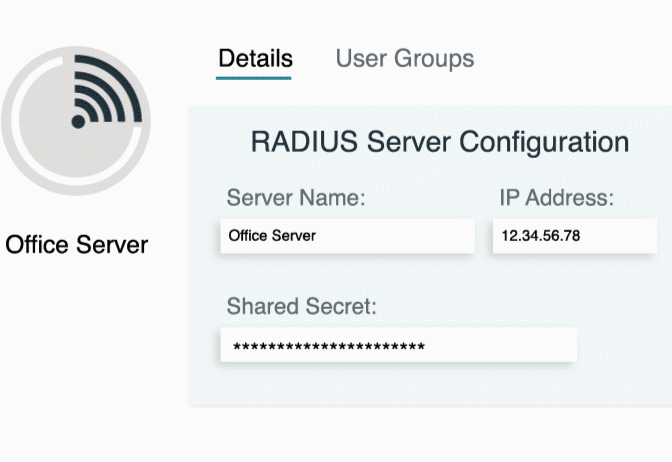Updated on March 7, 2025
Routing is essential in computer networks, ensuring data packets move between devices. One basic method is distance-vector routing, which calculates the shortest path (or fewest hops) between the source and destination. Routers share regular updates with nearby neighbors and adjust their routing tables accordingly. This post explores distance-vector routing concepts, how it works, and where it’s used.
Definition and Core Concepts
What Is Distance-Vector Routing?
Distance-vector routing is a type of distributed routing protocol. Routers using this protocol regularly share information with their directly connected neighbors to learn the distance to different destinations. When a router gets this information, it adds its own distance to the advertised routes and updates its routing table.
The term “distance-vector” refers to how the routing protocol calculates and communicates route information:
- Distance refers to the metric for determining the shortest path, typically measured in hop count.
- Vector represents the direction (or next-hop router) the packet should take.
Key Characteristics
- Periodic Updates: Routers regularly send updates, such as every 30 seconds in routing information protocol (RIP), to their neighbors. These updates share distance metrics and help maintain consistent routing information across the network.
- Hop Count as a Metric: This protocol uses hop count—the number of routers a data packet passes through—to find the shortest path. However, it doesn’t account for factors like link speed or network congestion.
- Routing by Rumor: Distance-vector routing relies on exchanging information with neighboring routers, giving each router an indirect view of the entire network. This method is often called “routing by rumor.”
Comparison to Link-State Routing
While distance-vector routing calculates paths based only on neighbor-provided information, link-state routing allows each router to have a full view of the network topology. This difference makes link-state protocols more suitable for large, dynamic networks but often more resource-intensive.
How Distance-Vector Routing Works
Routing Table Updates
Each router keeps a routing table listing:
- Known destinations
- The next-hop router to reach those destinations
- The distance (hop count) to each destination
The routing process follows these steps:
- Each router sends its routing table to directly connected neighbors at fixed intervals.
- Routers update their tables based on the shortest-path information they receive. If a neighbor advertises a better (shorter) route to a destination, the router will update its table accordingly.
Bellman-Ford Algorithm
The Bellman-Ford algorithm underpins distance-vector routing. It enables routers to calculate the shortest path by iteratively comparing distance metrics and choosing the smallest one. This approach ensures accurate updates while preventing unnecessary routing hops.
Split Horizon and Route Poisoning
Loop prevention is crucial in distance-vector routing. Without safeguards, routing loops can occur, causing data packets to circulate endlessly. Two key techniques address this challenge:
- Split Horizon: Routers avoid sending route information back to the source router from which it was learned. This eliminates the possibility of misleading updates.
- Route Poisoning: When a route becomes unreachable, routers mark it with an infinite metric (e.g., a hop count of 16 in RIP) and broadcast this information to prevent loops.
Key Features and Components
- Periodic Broadcasts: Distance-vector protocols send routing table updates at regular intervals. However, this ongoing process may lead to higher bandwidth consumption compared to alternatives like link-state routing.
- Hop Count as a Metric: Using hop count makes routing decisions straightforward. However, it has limitations, as it doesn’t account for factors like link speed or network congestion.
- Convergence Time: Convergence occurs when all routers in the network have consistent and accurate routing tables. Distance-vector protocols often have slower convergence times, which can increase the risk of routing loops in dynamic networks.
- Loop Prevention Mechanisms: To maintain stability and reliability, distance-vector protocols employ methods such as hold-down timers, split horizon, and route poisoning to avoid routing loops.
Examples of Distance-Vector Routing Protocols
Routing Information Protocol (RIP)
RIP is one of the most well-known distance-vector routing protocols. It uses a maximum hop count of 15, making it suitable only for small to medium-sized networks. While simple to configure and implement, RIP’s scalability limitations and slower convergence times make it less ideal for complex environments.
Interior Gateway Routing Protocol (IGRP) (Legacy)
Developed by Cisco, IGRP enhances distance-vector routing by incorporating multiple metrics, such as bandwidth, delay, load, and reliability, rather than relying solely on hop count. Although no longer widely used (replaced by EIGRP), IGRP played an important role in advancing routing protocols.
Advantages and Limitations of Distance-Vector Routing
Advantages
- Simple Configuration: Distance-vector protocols are straightforward to implement, making them ideal for small networks or non-complex setups.
- Efficient for Stable Topologies: They work well in networks with consistent, infrequent changes.
- Minimal Processing Overhead: Routers require fewer resources to run, as only neighboring information is exchanged.
Limitations
- Slower Convergence: Distance-vector protocols take longer to converge compared to link-state alternatives, increasing the potential risk of temporary routing loops.
- Scalability Challenges: Hop count metrics limit these protocols in large, dynamic networks.
- Higher Bandwidth Use: Periodic updates consume significant network bandwidth, especially in scenarios with frequent topology changes.
Distance-Vector vs. Link-State Routing
| Feature | Distance-Vector Routing | Link-State Routing |
| Network View | Routers rely on neighboring information (local view). | Routers build a complete network topology. |
| Metric | Primarily hop count. | Multiple metrics (e.g., bandwidth, delay). |
| Convergence | Slower convergence; suited for stable topologies. | Faster convergence; more dynamic. |
| Resource Requirements | Lower computational and memory overhead. | Higher resource demands. |
| Scalability | Limited by hop count (e.g., max of 15 hops in RIP). | Suitable for large, complex networks. |
| Examples | RIP, IGRP | OSPF, IS-IS |
Glossary of Terms
- Distance-Vector Routing: A routing method in which routers share distance-based metrics with directly connected neighbors to determine the best paths in a network.
- Routing Table: A data structure maintained by routers that lists paths, metrics, and next-hop information for network destinations.
- Hop Count: The number of intermediate routers a data packet must pass through to reach its destination.
- Bellman-Ford Algorithm: The algorithm used by distance-vector protocols to compute the shortest path by iteratively comparing metrics.
- Split Horizon: A loop prevention mechanism that prohibits routers from advertising a route back to the router from which it originated.
- Route Poisoning: A technique where unreachable routes are marked with an infinite metric to signal their invalidity.
- Convergence: The state wherein all routers in a network agree on consistent and accurate routing information.






